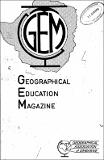| dc.contributor.author | Mutenga, R.C. | |
| dc.contributor.author | Namasasu, O. | |
| dc.coverage.spatial | Zimbabwe | en_GB |
| dc.date.accessioned | 2014-10-13T14:44:50Z | |
| dc.date.available | 2014-10-13T14:44:50Z | |
| dc.date.issued | 1988-09 | |
| dc.identifier.citation | Mutenga, R.C. & Namasasu, O. (1988) Growth Point Development In Zimbabwe: The Case Of Chiendambuya, GEM Vol. 11, no.2. Harare, Mt. Pleasant:|GAZ. | en_GB |
| dc.identifier.uri | https://opendocs.ids.ac.uk/opendocs/handle/20.500.12413/4755 | |
| dc.description | Geographical Education Magazine article. | en_GB |
| dc.description.abstract | Urbanization implies the geographic concentration of population.and non-agricultural activities in urban environments and the spatial diffusion of urban values, behavior, organizations and institutions into surrounding areas. The government of Zimbabwe is setting up growth points in a number of rural areas so as to spread out the urbanization process. In order to understand the strategy, its successes and problems it is useful to review growth point theory and examine Chiendambuya as a case study of the development of growth points in Zimbabwe. | en_GB |
| dc.language.iso | en | en_GB |
| dc.publisher | Geographical Association of Zimbabwe (GAZ) | en_GB |
| dc.rights.uri | http://creativecommons.org/licenses/by-nc-nd/3.0/ | en_GB |
| dc.subject | Rural Development | en_GB |
| dc.title | Growth Point Development In Zimbabwe: The Case Of Chiendambuya | en_GB |
| dc.type | Article | en_GB |
| dc.rights.holder | University of Zimbabwe | en_GB |


